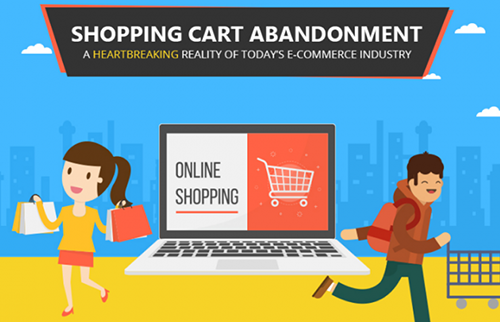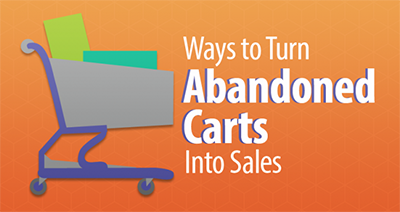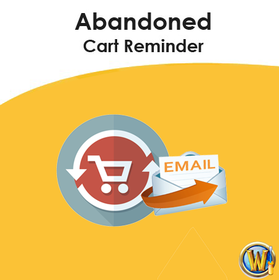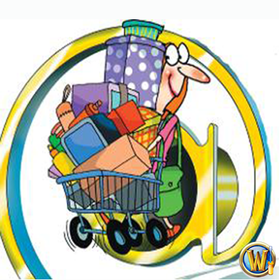CS-Cart: Ways to Turn Abandoned Carts Into Sales

Your hard work paid off. You attracted the attention of a potential customer, led them all the way through your buying funnel, and you even got them to add something to their cart. But suddenly—they disappeared without completing the purchase.
Abandoned carts can be incredibly frustrating, but they also mean you’re only one step away from closing a deal. Visitors who abandon their carts often do so for reasons that are within your power to fix. Conversion is usually just one extra reminder or small incentive away.
First, let’s examine the most common reasons nearly 70% of online shoppers have abandoned their carts. Then we’ll discuss some tips for retargeting shoppers who abandon full carts, with examples of how to turn this problem into an opportunity.
Top reasons for cart abandonment
More than half (58.6%) of people who abandon their cart say it’s because they simply weren’t ready to commit to a purchase, usually due to price. However, there are a number of other obstacles that can turn buyers away at the last moment.
These are the top reasons online shoppers leave retail sites without checking out:
- • 61%: Extra, hidden costs (taxes, shipping) are too high
- • 35%: Visitor forced to create an account and doesn’t want to
- • 27%: The checkout process is too complex or lengthy
- • 24%: Visitor isn’t able to calculate or see the total order cost up-front
Despite the multitude of reasons a shopper may abandon a full cart, 41.6% of visitors who abandon their carts will at least begin the checkout process. Often, this means they’ve entered their email as one of the first steps. This is incredibly useful for online retailers.
If you can capture the email addresses of the visitors abandoning their carts, you can retarget them in a variety of ways, encouraging them to return and giving yourself another chance at closing the sale.
Now that you know the thought process behind why visitors are abandoning their carts, it’s easy to see some areas where you can simplify and optimize your checkout process to reduce your cart abandonment rate.
Optimize your checkout process
Don’t let a clunky design be the reason you miss out on revenue. Here are a few ways to tackle common design issues that lead customers to abandon their carts:
- • Be transparent with fees. Even if it’s only an estimate, show calculated shipping fees, taxes, and any other additional fees before the visitor makes it to the end of the checkout process.
- • Make your checkout process fit on one page. The world has finally made the shift to being “mobile first.” Many shoppers are using their small mobile phones to check out, meaning it can be hard to tap boxes and input pages of information. Keep your checkout process simple, quick, and sleek by fitting it on one page. This also helps visitors estimate how long the entire checkout process will be.
- • Allow visitors to check out as a guest. It’s understandable that you want your visitors’ contact information, but resist the urge to force them to sign up for an account before checking out. There are plenty of other, less intrusive ways to get those coveted email addresses. For example, try adding a pop-up asking visitors to sign up for your list in exchange for a small discount when they first enter your site.
- • Offer various payment options. Entering credit card and shipping information can be tedious, especially on mobile devices. One-button payment options that store users’ information, such as Apple Pay or Amazon Pay, can keep the checkout process simple and quick while signifying credibility for your brand. They can also save retailers time on customer service and returns, as these buttons reduce typos and human errors when shoppers input payment and shipping information.
- • Offer various shipping options. Make sure to offer expedited shipping options. Even if these options are costly for the customer, simply having multiple shipping options can help sway them to convert as people are often shopping online for last-minute gifts or occasions.
- • Make sure your site is mobile-friendly and bug-free. The online world is always changing and with change comes frequent software, browser, and app updates. Make sure to test your site on various browsers and devices regularly to ensure it’s always functioning properly.
Segment your abandoned cart visitors
You can ask three questions to better understand who is visiting your site without checking out and how to convert different types of visitors into buyers.
- • Who is visiting my site? If the visitor is new to your site, recognizing that with a special first-time visitor email or small discount can make them feel special. If the visitor is a returning customer, leverage your existing data from their past visits and purchases to provide a customized upsell or cross-sell email. Personalizing your outreach can go a long way in helping customers remember your brand and form a connection to it.
- • What products are in the cart they abandoned? Sometimes the products themselves may be holding back your visitors from fully committing. Are the products in question complicated to understand or extremely niche? Perhaps the visitor simply needs more information or third-party validation before buying the product. Send them an FAQ, your returns policy, or a link to the product reviews or support page to instill more comfort and trust and encourage them to convert.
- • How much is total cost of the cart? If there are many items in the cart, a small discount may be all the visitor needs to take the plunge. Offering free shipping for a cart over a certain price threshold is one good way to reduce total cart costs. You may also consider spacing out your abandoned cart email series to these customers, as they may just need more time to think about purchasing high-cost items.
Send an abandoned cart email series
Once you’ve segmented your audience, you’ll need to decide what platform you’ll use to send and automate your email series.
Even if you only send one abandoned cart email, that can help nudge visitors back to your site and boost your conversions. However, many online retailers find success with a three-pronged email series in the following order:
- • Reminder email We live in a world full of distractions. Sometimes, visitors just need a simple reminder that they left your site without checking out. Send a reminder email to visitors within one day of their abandoned cart visit, reminding them to return to the site and finish checking out. Make sure to include a photo of the item as well as the price, description, and a link back to their cart.
- • Discount email If the visitor doesn’t “bite” on the reminder email, send a follow-up, discount email three to five days later. This time, consider including an incentive, such as a small discount or free shipping code. Make sure to give visitors a deadline by which they must take advantage of the discount. This adds another layer of urgency to push them back to your site to check out.
- • Deadline email If the visitor still hasn’t made their way back to your site, send one final reminder before the discount expires. This last email is aimed at the 61% of abandoned cart shoppers who say they leave their carts because of the high price.
Test and retarget
Even after you’ve segmented your visitors and built customized messages, you should continue to test and measure the different components of your emails to make sure they’re as effective as possible.
A/B test various elements such as:
- • Subject lines
- • The size of the discount you’re offering
- • The timing of the email sequence
You can evaluate how effective these various elements of your emails are by measuring and comparing open rates, click-through-rate, and how many visitors returned to your site and converted after opening an email.
Conclusions and next steps
Don’t let abandoned carts get you down. Chances are, if a visitor filled their cart, even if they leave without checking out, they are already attracted to your brand and offerings.
Taking care of visitors who abandon their cart is simply another way to expand and perfect your customer service experience. Take the time to invest in these visitors, and soon you will reap the benefits as they begin to trust and invest in you too.
source: capterra.com
Share
Article related products
Categories
Recent articles
Archives
You may be interested in





